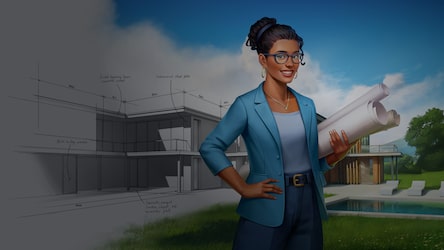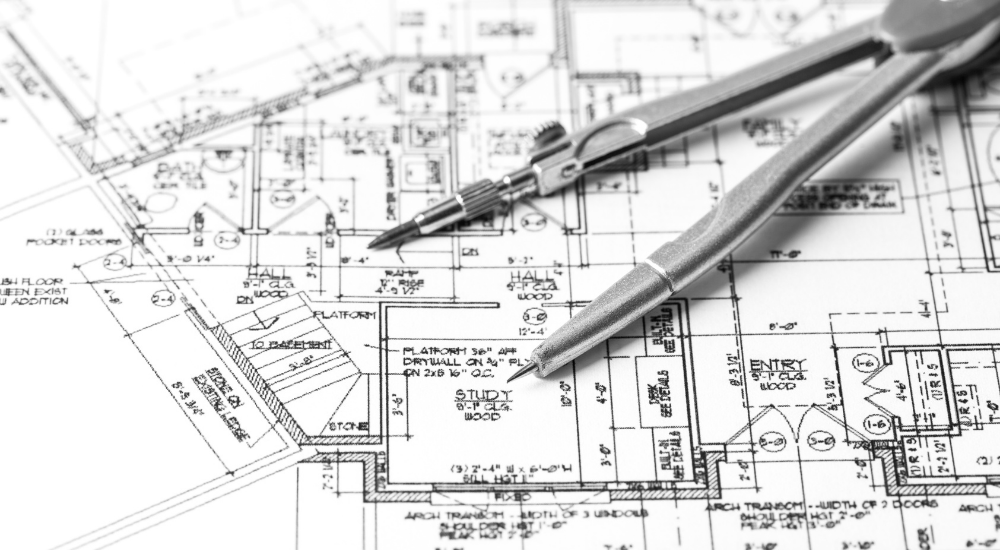Architect Advice on Optimizing Small Urban Spaces
Architect Advice on Optimizing Small Urban Spaces
Blog Article
Comprehending the Diverse Job Paths Available for Aspiring Architect
As an ambitious Architect, you have a globe of job paths waiting for you. Whether you're drawn to traditional architecture or the nuances of lasting design, there's a specific niche that aligns with your passions.
Traditional Design: Creating Structures and Structures
Standard architecture focuses on making buildings and structures that blend functionality with aesthetic charm. Your layouts can show social heritage, showcasing regional traditions while meeting modern-day needs.
You'll develop skills in drafting, model-making, and website evaluation, allowing you to imagine and interact your ideas effectively. Engaging with clients, you'll require to comprehend their vision and translate it into possible designs.
Moreover, developing codes and sustainability methods are vital in your job, ensuring your structures are secure and environmentally friendly. As you expand in your job, you'll find opportunities in residential, business, or also reconstruction jobs, each offering special difficulties. Embracing conventional style leads the way for a fulfilling job that admires the past while shaping the future.
Urban Planning: Forming Neighborhoods and Public Spaces
As an aspiring Architect, you can play a necessary duty as a metropolitan organizer, changing just how communities operate and interact. By employing community involvement approaches, you'll guarantee that citizens have a voice in forming their setting. Plus, integrating lasting layout concepts will help develop spaces that not only fulfill today's needs however also protect the future.
Function of Urban Planners
While several may assume of designers as the sole dreamers behind structures, urban planners play a necessary duty in forming the broader landscape of communities and public rooms. By teaming up with numerous stakeholders, you'll assist develop parks, transportation systems, and property areas that advertise social interaction and accessibility. Your proficiency in spatial layout and neighborhood characteristics allows you to envision future growth while maintaining cultural heritage.
Area Involvement Techniques
Efficient area involvement approaches are vital for urban planners to guarantee that the voices of residents are listened to and valued in the preparation procedure. To promote significant dialogue, you need to prioritize open online forums and workshops where neighborhood participants can share their concepts and worries. Usage studies and social networks to reach a wider audience, making certain varied viewpoints are consisted of. Collaborating with neighborhood organizations can improve trust fund and promote deeper links. It is necessary to provide clear information concerning decision-making procedures and proposed tasks, allowing citizens to really feel enlightened and encouraged. By proactively incorporating and listening comments, you'll produce spaces that reflect the area's requirements, ultimately causing even more sustainable and successful urban settings. Embrace openness and constant discussion for lasting influence.
Sustainable Style Principles
When creating urban rooms, including sustainable design principles is vital for developing settings that prosper both environmentally and socially. You must begin by concentrating on power performance, making use of materials that decrease waste and advertise recycling. Take into consideration incorporating green rooms, like yards and parks, to enhance biodiversity and boost air high quality. Advertising walkability and public transport can decrease reliance on automobiles, fostering a healthier neighborhood.
Designing with water preservation in mind is likewise key-- believe regarding rainfall gardens and permeable surface areas to manage stormwater. Entailing area members throughout the planning process guarantees that the rooms you develop fulfill their demands and motivate social communication. By embracing these concepts, you'll add to vibrant, sustainable metropolitan landscapes that profit everybody.

Landscape Style: Developing Lasting Outdoor Settings
As you check out landscape architecture, you'll discover important design concepts that create useful and stunning outside spaces. Sustainable practices play a vital role in making certain these environments grow while reducing environmental influence. Plus, you'll discover a selection of profession chances that allow you to make an actual distinction in just how individuals engage with nature.
Design Principles in Landscape
Comprehending design principles in landscape style is important for creating lasting outside settings that integrate with nature. You'll require to ponder components like range, equilibrium, and proportion to assure your designs feel natural and welcoming. Incorporating native plants not only improves biodiversity but additionally reduces water usage, making your landscape resistant. Think about the circulation of area and just how individuals interact with it; pathways and seating locations must invite exploration and leisure. Furthermore, take note of seasonal modifications, creating with materials that complement the environments year-round (Architect). By prioritizing sustainability and aesthetic appeals, you can produce exterior rooms that enrich the area and promote health. Embracing these concepts will set a solid foundation for your job in landscape architecture.
Lasting Practices Review
Sustainable techniques in landscape architecture not only concentrate on aesthetics yet additionally prioritize eco-friendly health and source preservation. By integrating indigenous plants, YOURURL.com you improve biodiversity and decrease the need for chemical fertilizers and pesticides. Executing effective irrigation systems assists conserve water and minimizes overflow, securing neighboring ecological communities. You can create areas that advertise soil health, such as utilizing natural materials and exercising permaculture principles. In addition, integrating eco-friendly infrastructure, like rainfall gardens and porous sidewalks, help in stormwater monitoring and decreases metropolitan warmth. You add to a healthier world and give rooms that cultivate area connection when you produce outside environments with sustainability in mind. Ultimately, these methods guarantee your styles benefit both individuals and the atmosphere for many years to come.
Job Opportunities Expedition
With a strong structure in sustainable methods, landscape architecture offers a variety of occupation courses that permit you to make a significant effect on the setting. You might function as a landscape designer, developing visually pleasing and try here useful outside spaces, or specialize in ecological repair, assisting to restore broken ecosystems. Urban organizers often work together with landscape architects to produce environment-friendly areas in metropolitan settings, boosting city livability. If you're passionate about education and learning, consider becoming a landscape design instructor, inspiring future generations. Additionally, you might work with nonprofits concentrated on ecological sustainability or involve in study to introduce brand-new techniques. Each path not only forms attractive atmospheres yet additionally fosters a healthier planet for future generations.
Sustainable Layout: Concentrating On Eco-Friendly Practices
As you discover your career in architecture, embracing eco-friendly practices can set you apart in an affordable field. Lasting layout concentrates on creating structures that reduce ecological influence while enhancing occupant well-being. By integrating renewable products, energy-efficient systems, and lasting structure methods, you'll add to a greener future.
Beginning by getting expertise of green accreditations like LEED or BREEAM, which can boost your qualifications. Consider exactly how all-natural light, ventilation, and thermal performance can maximize style. Team up with designers and environmental experts to introduce solutions that reduce waste and conserve resources.
Do not fail to remember the relevance of area involvement-- interesting neighborhood stakeholders can inspire designs that harmonize with the atmosphere. As clients significantly focus on sustainability, your know-how in environment-friendly practices will certainly not just draw in tasks however additionally meet your passion for accountable design. Embrace this crucial facet of the profession, and see your profession grow.
Historical Conservation: Protecting and Bring Back Social Heritage
While you start on your building journey, think about the crucial role of historic conservation in preserving our social heritage. This area concentrates on the defense and restoration of considerable buildings, sites, and frameworks that tell the tales of our past. By involving in historical conservation, you'll help secure the building legacy that shapes area identity.
As a historical conservation Architect, you'll analyze historical significance and examine the problem of structures. You'll function carefully with preservationists and historians to assure authentic reconstruction strategies are employed. This profession path allows you to mix creative thinking with study, enabling you to design options that value original materials and craftsmanship.
Your work not just adds to sustainability by recycling existing structures but also fosters a sense of satisfaction within areas. Embracing this path will certainly aid you become a guardian of history, protecting the tales and aesthetic appeals that improve our lives.
Inside Design: Enhancing Indoor Spaces
Historic preservation and interior design both share a dedication to improving the constructed atmosphere, however they concentrate on various facets. While historic conservation highlights preserving a explanation framework's historic and social worth, indoor style zeroes in on enhancing interior spaces for capability and looks.
As a hopeful Architect, you'll locate that interior architecture allows you to mix imagination with technical skills. You'll create rooms that not only look great yet likewise promote comfort and effectiveness. This area involves understanding exactly how light, shade, and products connect within a room, affecting state of mind and usability.
You'll work on various tasks, from household homes to business offices, making certain that each setting meets the demands of its occupants. By focusing on individual experience, you can transform interiors into functional and inspiring spaces, making a considerable influence on exactly how people connect with their surroundings. Accept the chance to enhance indoor atmospheres and form the means people live and work.
Industrial Style: Merging Capability With Aesthetic Appeals
Industrial layout plays a crucial duty in creating products that perfectly blend aesthetics with capability, making certain that what you utilize everyday is not just visually enticing yet additionally functional. As an ambitious Architect, you might engage on your own in this area, focusing on making every little thing from furnishings to customer electronic devices. Your work includes understanding user requirements, products, and manufacturing procedures, permitting you to develop innovative options that improve daily experiences.
In commercial style, you'll usually team up with online marketers, engineers, and producers, guaranteeing that your designs are not just stunning however likewise feasible. This occupation path offers a dynamic environment where creative thinking meets practicality, making it a satisfying option for engineers interested in forming the items of tomorrow.
Regularly Asked Questions
What Educational Certifications Do I Required to End Up Being a Designer?
To become an architect, you'll require an expert level in design, generally a Bachelor's or Master's. In addition, you'll have to complete an internship and pass the Architect Enrollment Evaluation to practice legally.
Exist Certification Requirements for Different Architectural Profession Paths?
Yes, there're accreditation needs for various architectural courses. Architect. You'll require to pass examinations, total internships, and often go after specialized training, relying on your picked focus, like landscape design, urban design, or historic conservation
What Software Abilities Are Vital for Architects Today?

How Can I Gain Practical Experience While Examining Style?
You can acquire sensible experience by interning at architectural companies, taking part in design competitors, offering for area jobs, or collaborating with classmates on real-world assignments. These opportunities improve your skills and build beneficial connections in the industry.
What Work Opportunities Exist Outside Traditional Style Firms?
You can explore numerous job opportunities outside traditional design companies, like urban preparation, interior decoration, landscape architecture, construction management, property development, or even functions in sustainability consulting. Each deals distinct challenges and rewards.
Whether you're drawn to traditional architecture or the subtleties of sustainable design, there's a particular niche that aligns with your rate of interests.When developing urban areas, including sustainable style principles is critical for producing environments that flourish both ecologically and socially.As you discover landscape style, you'll uncover vital style principles that develop functional and gorgeous outdoor spaces.Recognizing design principles in landscape design is crucial for developing lasting outdoor settings that balance with nature.In industrial layout, you'll typically work together with producers, engineers, and marketing professionals, ensuring that your layouts are not just stunning yet additionally feasible.
Report this page